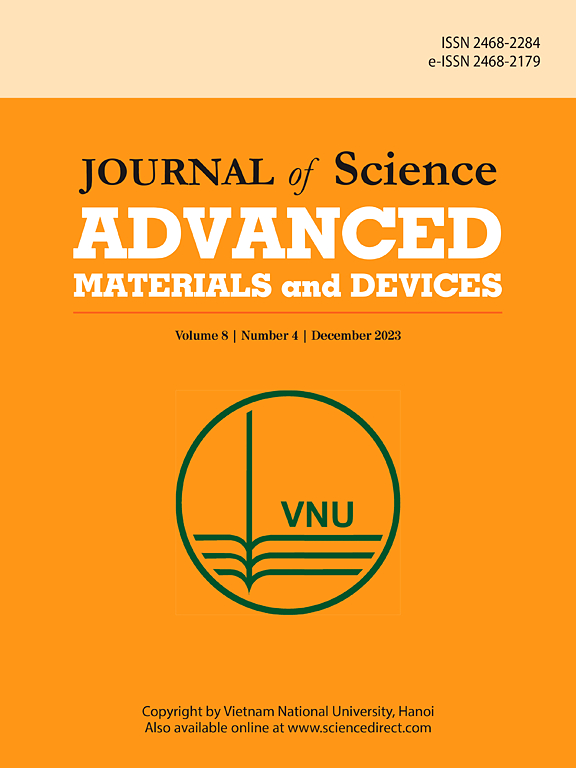Polybutadiene polyurethane acrylate photosensitive resin and its application in 3D printing
IF 6.7
3区 材料科学
Q1 MATERIALS SCIENCE, MULTIDISCIPLINARY
Journal of Science: Advanced Materials and Devices
Pub Date : 2024-12-31
DOI:10.1016/j.jsamd.2024.100844
引用次数: 0
Abstract
High-performance resins that can withstand temperature changes are required to expand the application potential of additive manufacturing (3D printing) in response to increasing demand from various fields. In this study, a novel 3D-printing polybutadiene polyurethane acrylate photosensitive resin named HTPBMA was prepared by mixing hydroxyl-terminated polybutadiene (HTPB) as the base material with other active diluent monomers and photoinitiators, including hydroxypropyl methacrylate (HPMA). The resulting resins exhibited good rheological properties and rapid photocuring ability, depending on the type and proportion of diluent monomer. In particular, the tensile strength and elongation at break of the sample with a 65:35 HTPBMA:HPMA ratio at −25 °C were 32.9 MPa and 246.1%, respectively, being 2.13 and 1.58 times the values at room temperature, respectively. These results indicate that HTPBMA exhibits excellent low-temperature performance and physical properties. The enhancement mechanism can likely be attributed to introducing of a flexible carbon chain as well as increased cross-linking density (υe). These advantages suggest that the novel photosensitive resin designed and prepared in this study can be used for photocuring 3D printing and maintain excellent performance under extreme climatic conditions. Thus, the proposed HTPBMA has broad application prospects in aerospace and materials science, especially in shoe materials and tires.
求助全文
约1分钟内获得全文
求助全文
来源期刊

Journal of Science: Advanced Materials and Devices
Materials Science-Electronic, Optical and Magnetic Materials
CiteScore
11.90
自引率
2.50%
发文量
88
审稿时长
47 days
期刊介绍:
In 1985, the Journal of Science was founded as a platform for publishing national and international research papers across various disciplines, including natural sciences, technology, social sciences, and humanities. Over the years, the journal has experienced remarkable growth in terms of quality, size, and scope. Today, it encompasses a diverse range of publications dedicated to academic research.
Considering the rapid expansion of materials science, we are pleased to introduce the Journal of Science: Advanced Materials and Devices. This new addition to our journal series offers researchers an exciting opportunity to publish their work on all aspects of materials science and technology within the esteemed Journal of Science.
With this development, we aim to revolutionize the way research in materials science is expressed and organized, further strengthening our commitment to promoting outstanding research across various scientific and technological fields.
 求助内容:
求助内容: 应助结果提醒方式:
应助结果提醒方式:


